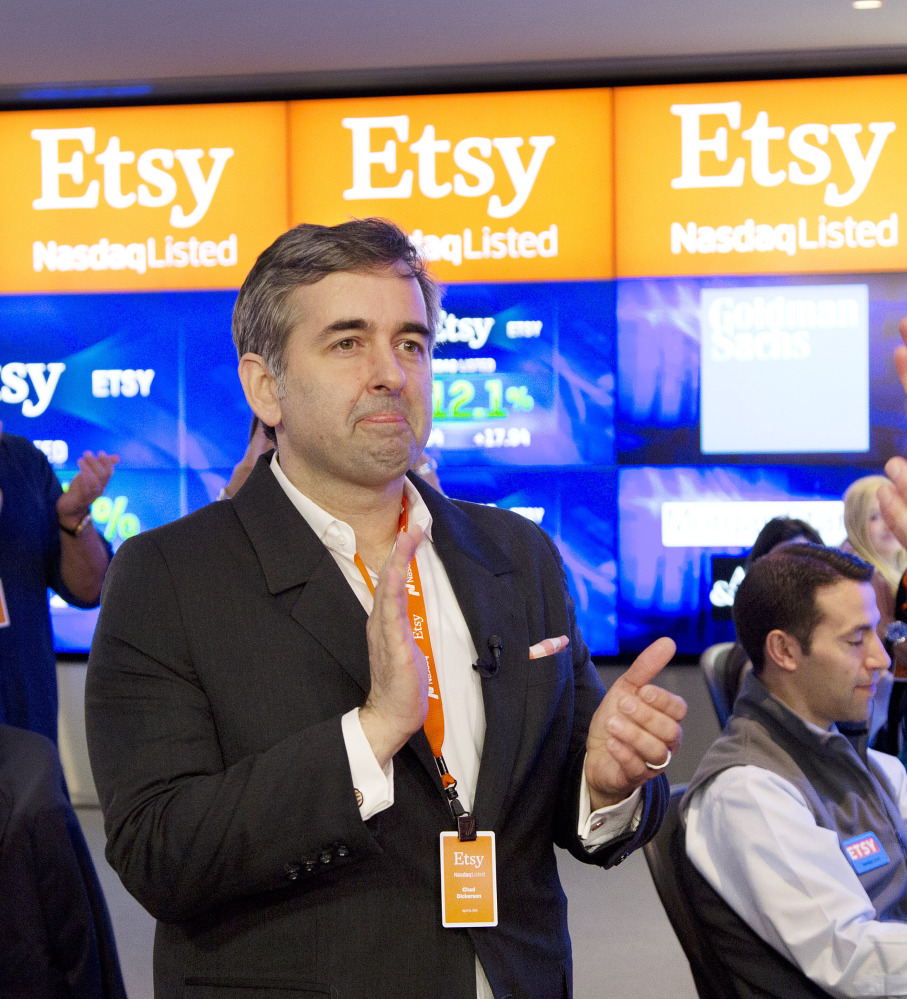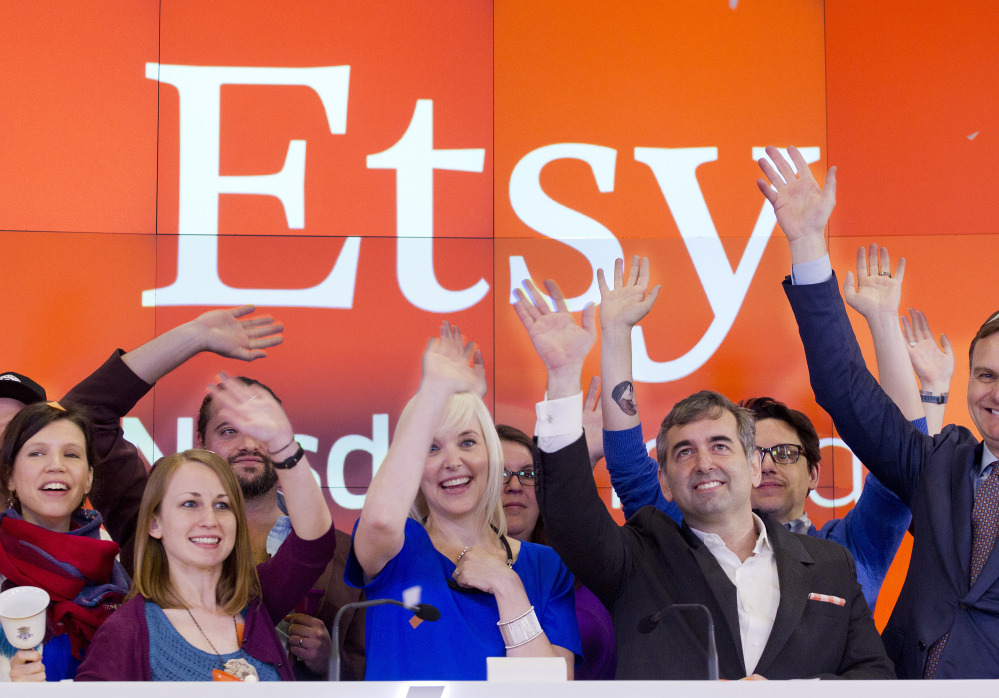When American companies go public, most promise to “maximize shareholder value” – without saying exactly what those three words mean. Does that include paying hard-working employees minimum wage? Jacking up prices? Or cutting jobs even when they make a profit?
Then there’s Etsy, the online bazaar of often-bizarre artisanal wares that made a strong stock market debut Thursday. When it announced its initial public offering last month, the Brooklyn-based craft marketplace made it clear that it valued social consciousness more than making sure stockholders made the most dough.
“For decades now, the conventional and dominant retail model has relentlessly focused on delivering goods at the lowest price, valuing products and profit over community,” Etsy chief executive Chad Dickerson wrote in securities filings.
“I do not believe that this race to the bottom is a sustainable, successful model. … If we succeed, then other companies might replicate our model. We think the world will be a better place for it.”
Etsy’s share price roughly doubled on its first day on the market, ending Thursday at $30 and helping the firm raise about $300 million. Valuing the company at about $3 billion, investors made Etsy one of the largest initial public offerings for a tech company this year.
Etsy leaders said they hope the offering will give them more visibility in a crowded tech marketplace and leave them with the cash they need to grow. But Etsy’s long-term success on the stock market will be determined largely by just how much conscious capitalism Wall Street investors are willing to bet on.
If too many are turned off by all the altruism, Etsy’s stock price could sink – or, as some Etsy regulars worry, the firm could give in and become exactly the type of company they hoped to avoid.
Etsy was founded in Brooklyn in 2005 by Rob Kalin, a carpenter and photographer looking for a place to sell computers he made out of wood. But the hipster marketplace now boasts more than 1 million active sellers, nearly 20 million active buyers and online aisles stocked with more than 26 million vintage trinkets and handmade crafts, including $500 cat battle armor and $30 planters that look like feet.
Etsy found a lucrative marketplace among the more than 50 million American freelancers seeking to sell their wares, and about $1.3 billion in merchandise was sold through the site in 2013. To make money, Etsy charges a 20-cent listing fee, takes a small cut off each item sold and offers ad space and payment services, all of which helped the company grow revenue by more than 50 percent last year to nearly $200 million.
But none of that craftiness has produced any profit. Even with the sales bump, Etsy ended last year even further in the red, with a $15 million loss. The company said in filings that it might not turn a profit anytime soon.
Etsy leaders warned in filings that they could choose environmentally friendly steps – like investing in cleaner shipping methods – even if they cost more, and said their general “adherence to our values” could hurt how the e-commerce firm performs.
Send questions/comments to the editors.




Success. Please wait for the page to reload. If the page does not reload within 5 seconds, please refresh the page.
Enter your email and password to access comments.
Hi, to comment on stories you must . This profile is in addition to your subscription and website login.
Already have a commenting profile? .
Invalid username/password.
Please check your email to confirm and complete your registration.
Only subscribers are eligible to post comments. Please subscribe or login first for digital access. Here’s why.
Use the form below to reset your password. When you've submitted your account email, we will send an email with a reset code.